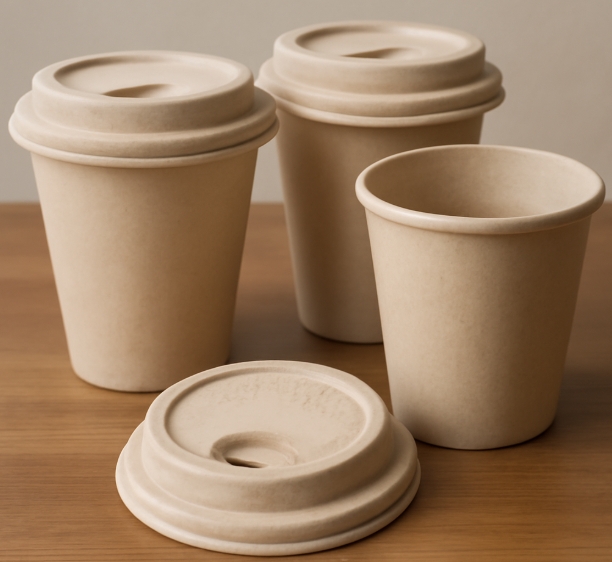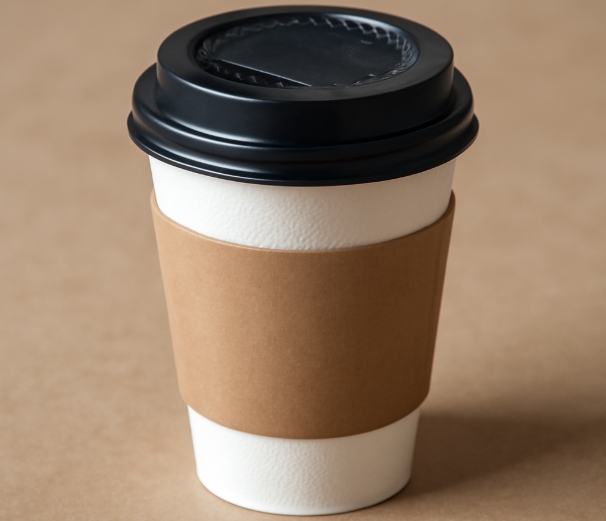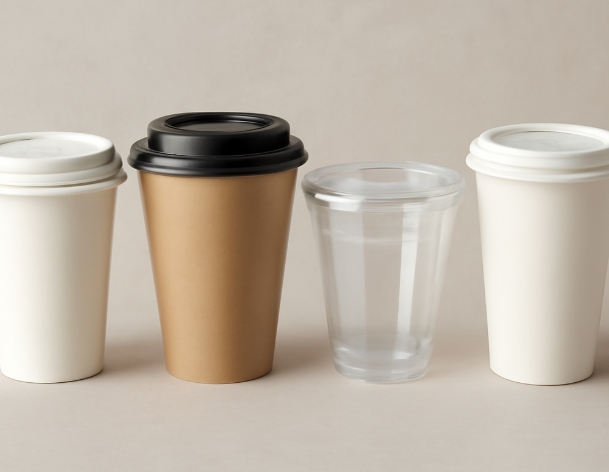
Content Menu
● Understanding Disposable Lid Cups
>> Types of Disposable Lid Cups
>>> Paper Cups with Lids
>>> Plastic Cups with Lids
>>> Compostable and Biodegradable Cups
>> Types of Lids
● Advantages of Disposable Lid Cups for Takeout Drinks
>> Convenience and Portability
>> Hygiene and Safety
>> Versatility
>> Cost-Effectiveness
>> Customization and Branding
● Practical Considerations for Takeout Use
>> Material Selection
>> Lid Compatibility
>> Temperature Resistance
>> Regulatory Compliance
>> Environmental Impact
● Enhancing the Takeout Experience
>> Spill Prevention
>> Temperature Maintenance
>> Aroma and Flavor Preservation
>> Customer Choice
● Sustainability and Future Trends
>> Compostable and Recyclable Options
>> Reducing Waste
● Choosing the Right Disposable Lid Cup for Your Business
● Conclusion
● Frequently Asked Questions (FAQ)
>> 1. What are the main types of disposable lid cups used for takeout drinks?
>> 2. Are disposable lid cups suitable for both hot and cold drinks?
>> 3. How can businesses ensure the lids fit securely on disposable cups?
>> 4. Are disposable lid cups environmentally friendly?
>> 5. What should customers do to recycle disposable lid cups and lids?
In today's fast-paced world, convenience, hygiene, and efficiency are at the core of the food and beverage industry. Whether you're running a bustling coffee shop, a trendy juice bar, or a busy fast-food outlet, the need for reliable packaging solutions is undeniable. Among the most popular choices for serving drinks on the go are disposable lid cups. But can these cups truly meet the demands of takeout beverages? This comprehensive article explores the practicality, benefits, and considerations of using disposable lid cups for takeout drinks, offering insights for businesses, consumers, and eco-conscious individuals alike.

Understanding Disposable Lid Cups
Disposable lid cups are single-use beverage containers, typically made from paper, plastic, or plant-based materials, paired with a fitted lid. The lid serves multiple purposes: preventing spills, maintaining temperature, and enhancing portability. These cups are designed for both hot and cold drinks, making them a staple in cafes, restaurants, food trucks, and convenience stores.
Types of Disposable Lid Cups
Paper Cups with Lids
Paper cups are commonly used for hot drinks like coffee and tea. They are often lined with a thin layer of plastic or wax for leak resistance, ensuring that the cup holds up well even with steaming beverages.
Plastic Cups with Lids
Plastic disposable lid cups are ideal for cold beverages such as iced coffee, smoothies, sodas, and juices. They are available in clear or frosted finishes, which not only provide visual appeal but also allow customers to see the drink inside.
Compostable and Biodegradable Cups
Compostable and biodegradable disposable lid cups are made from plant fibers or bioplastics. These are designed for environmentally conscious businesses and consumers who want to reduce their ecological footprint.
Types of Lids
- Flat Lids: Feature a straw slot or sipping hole, suitable for cold drinks.
- Dome Lids: Provide extra space for whipped cream or foam, perfect for specialty drinks.
- Sipper Lids: Have a small opening for sipping, commonly used for hot beverages.
- Snap-On Lids: Ensure a secure fit to prevent leaks and spills.
Advantages of Disposable Lid Cups for Takeout Drinks
Convenience and Portability
Disposable lid cups are engineered for on-the-go lifestyles. They eliminate the need for washing and storing reusable cups, making them ideal for busy environments and large gatherings. Their lightweight design makes transportation effortless, whether you're grabbing a coffee on your commute or delivering drinks to customers.
Hygiene and Safety
Single-use cups and lids provide a fresh, uncontaminated surface for every customer. This is crucial in reducing the risk of cross-contamination, especially in high-traffic settings. The secure lid also protects against accidental spills, keeping both the beverage and the consumer safe.
Versatility
Disposable lid cups come in a range of sizes and materials, accommodating everything from espresso shots to large iced teas. The variety of lid styles allows businesses to tailor the drinking experience to the beverage, whether it's a hot latte or a frosty smoothie.
Cost-Effectiveness
For businesses, disposable lid cups offer financial efficiency. Their low unit cost, combined with savings on labor and cleaning supplies, makes them a budget-friendly option. Lightweight materials also reduce shipping and storage expenses.
Customization and Branding
Many suppliers offer customization options, allowing businesses to print logos, slogans, or promotional messages on cups and lids. This turns every takeout drink into a marketing opportunity, increasing brand visibility.

Practical Considerations for Takeout Use
Material Selection
Choosing the right material is essential for both performance and sustainability. Paper cups are preferred for hot drinks due to their insulating properties, while plastic or bioplastic cups are better for cold beverages. Compostable options are gaining popularity as businesses seek to reduce their environmental footprint.
Lid Compatibility
Ensuring that lids fit securely on cups is critical to prevent leaks and spills. Most manufacturers design lids to match standard cup sizes, but it's important to verify compatibility, especially when sourcing from different suppliers.
Temperature Resistance
Disposable lid cups must withstand the temperature of the beverage they contain. Paper cups with insulated sleeves or double walls are ideal for hot drinks, while plastic cups are formulated to resist cracking when filled with cold liquids and ice.
Regulatory Compliance
Local regulations regarding single-use plastics and recyclable materials may impact the types of disposable lid cups a business can use. Staying informed about these rules helps avoid fines and supports sustainability goals.
Environmental Impact
While disposable lid cups offer unmatched convenience, they also raise concerns about waste. Many businesses are transitioning to compostable or recyclable options, and some cities have implemented bans on certain types of single-use plastics. Proper disposal and recycling practices are essential to minimize environmental harm.
Enhancing the Takeout Experience
Spill Prevention
A well-designed lid is crucial for preventing spills during transport. Snap-on and sipper lids provide a tight seal, reducing the risk of leaks. Dome lids are especially useful for drinks with toppings, as they offer extra space without compromising security.
Temperature Maintenance
Lids help retain the temperature of the beverage, keeping hot drinks warm and cold drinks chilled for longer periods. This is particularly important for customers who consume their drinks over an extended time.
Aroma and Flavor Preservation
For coffee and tea, lids can help preserve the aroma and flavor by trapping volatile compounds. Some modern lids are designed to direct these aromas toward the nose, enhancing the sensory experience.
Customer Choice
Some businesses allow customers to choose whether they want a lid, balancing convenience with environmental considerations. This approach can reduce unnecessary waste while still offering the benefits of disposable lid cups when needed.
Sustainability and Future Trends
The environmental impact of disposable lid cups is a growing concern. Innovations in materials, such as compostable plant fibers and recyclable plastics, are helping to address these issues. Businesses are encouraged to educate customers about proper disposal and to offer recycling or composting options when possible.
Compostable and Recyclable Options
- Compostable Cups and Lids: Made from materials like PLA or bagasse, these break down in commercial composting facilities.
- Recyclable Plastics: PET lids and cups can be recycled in many areas, provided they are clean and free from contaminants.
Reducing Waste
Some coffee shops and restaurants are moving toward a “lid on request” model, providing lids only when customers ask for them. This simple change can significantly reduce the number of single-use items distributed.
Choosing the Right Disposable Lid Cup for Your Business
When selecting disposable lid cups for takeout drinks, consider the following factors:
- Beverage Type: Hot or cold, with or without toppings.
- Cup Size: Match lids and cups for a secure fit.
- Material: Paper, plastic, or compostable options.
- Branding Needs: Customization for marketing.
- Local Regulations: Compliance with waste reduction laws.
- Customer Preferences: Offering choices to reduce unnecessary waste.
By evaluating these elements, businesses can provide a superior takeout experience while managing costs and supporting sustainability goals.
Conclusion
Disposable lid cups have become an essential part of modern takeout beverage service, offering unmatched convenience, hygiene, and versatility. Their ability to securely contain both hot and cold drinks, combined with a variety of lid options, makes them the preferred choice for businesses and consumers alike. While concerns about environmental impact persist, innovations in compostable and recyclable materials are paving the way for more sustainable solutions. By understanding the different types, benefits, and considerations of disposable lid cups, businesses can make informed decisions that enhance the customer experience and support a cleaner, greener future.

Frequently Asked Questions (FAQ)
1. What are the main types of disposable lid cups used for takeout drinks?
Disposable lid cups for takeout drinks generally fall into three categories: paper cups with lids for hot beverages, plastic cups with lids for cold drinks, and compostable or biodegradable cups for eco-friendly service. Each type is paired with a compatible lid-flat, dome, sipper, or snap-on-tailored to the drink's temperature and contents.
2. Are disposable lid cups suitable for both hot and cold drinks?
Yes, disposable lid cups are designed to accommodate both hot and cold beverages. Paper cups with insulated or double walls are ideal for hot drinks, while plastic or bioplastic cups are better suited for cold drinks. The choice of lid-such as sipper for hot drinks and dome for cold drinks with toppings-also enhances suitability.
3. How can businesses ensure the lids fit securely on disposable cups?
To ensure a secure fit, businesses should source lids and cups from the same supplier or verify compatibility between products. Most disposable lid cups and lids are manufactured in standard sizes, but checking for a snug, leak-proof fit is essential to prevent spills during takeout.
4. Are disposable lid cups environmentally friendly?
The environmental impact of disposable lid cups depends on the materials used. Compostable and biodegradable options made from plant fibers or bioplastics are more sustainable than traditional plastic. Recyclable PET lids are also available, but proper disposal and local recycling guidelines must be followed to maximize environmental benefits.
5. What should customers do to recycle disposable lid cups and lids?
Customers should check local recycling guidelines to determine if their disposable lid cups and lids are accepted. Lids made from PET plastic are often recyclable, but they must be clean and free from residue. Compostable cups and lids require access to commercial composting facilities. When in doubt, consult local waste management resources for proper disposal instructions.

















